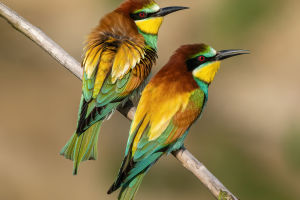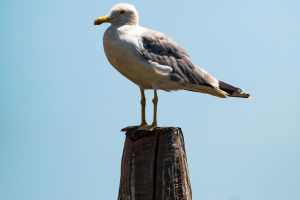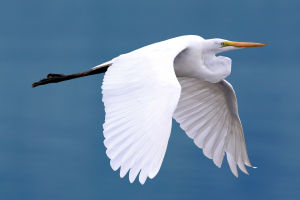New Zealand's Coastal Gem
The New Zealand Red-billed Gull is a seabird unique to New Zealand.
Recognizable by its bright red beak and feet, as well as its striking white plumage, this bird can be found along New Zealand's coastlines and inland waters.
The red-billed gull holds a significant place not only in New Zealand's ecosystem but also in its culture and history.
Physical Features
The red-billed gull is medium-sized, with adult birds typically measuring about 37 centimeters in length and boasting a wingspan of approximately 1 meter. Its most striking feature is its bright red beak and feet, which contrast vividly with its predominantly white feathers.
The back and wings are light gray, adding to its distinctive appearance. Young birds have duller feathers, and their beaks and feet are brown or black, gradually turning red as they mature. Additionally, red-billed gulls have a distinct white ring around their eyes, making them particularly eye-catching among seabirds.
Habitat and Distribution
The red-billed gull primarily inhabits the coastal areas of New Zealand, including the coastlines, islands, and inland lakes of both the South Island and the North Island. They are particularly fond of nesting on sandy beaches, rocky shores, and estuaries.
Although red-billed gulls are occasionally spotted outside New Zealand, these instances generally involve individual stray birds rather than established populations. They are highly social creatures, often seen in large groups on beaches and coastlines.
Living Habits
Red-billed gulls are omnivorous, feeding on small fish, crustaceans, insects, and carrion. In tourist areas of New Zealand, these gulls often take food from visitors and sometimes even actively ask for food.
Their foraging methods are diverse; they can catch prey while flying over water or forage on land. Red-billed gulls are usually very social during foraging, frequently seen foraging in groups.
Breeding and Brooding
The breeding season for red-billed gulls typically occurs in spring and summer, from October to January of the following year. They build nests on the ground, usually on sandy beaches or in rock crevices, using grass, algae, and other plant materials.
Each breeding pair lays 2 to 3 eggs, which are light blue with black spots. The incubation period lasts about three weeks, during which the male and female take turns incubating the eggs. After the chicks hatch, both parents work together to care for and feed them until they can fly and forage independently.
Conservation Status
Although the red-billed gull is considered one of the common seabirds in New Zealand, its numbers have declined over the past few decades. This decline is primarily due to habitat destruction caused by human activities, climate change, and the invasion of alien species.
The New Zealand government and various conservation organizations have implemented measures to protect the red-billed gull and its habitat. These measures include establishing protected areas, restricting fishing, and managing tourism activities to reduce their impact on these birds.
Cultural Significance
The red-billed gull also holds an important place in New Zealand culture. To the Māori people, the red-billed gull is considered a bird that symbolizes good luck and wisdom. This bird frequently appears in New Zealand literature, artworks, and even on stamps.
Additionally, the red-billed gull has become a notable part of New Zealand's tourism industry due to its interactions with tourists, drawing the attention and affection of many visitors.
The New Zealand red-billed gull is a bird of remarkable ecological, cultural, and economic significance. Its bright red beak and feet, social behavior, and interactions with humans make it a unique and beloved part of New Zealand's natural heritage.
Protecting the red-billed gull is not only about preserving a species but also about safeguarding the natural and cultural heritage of New Zealand.


